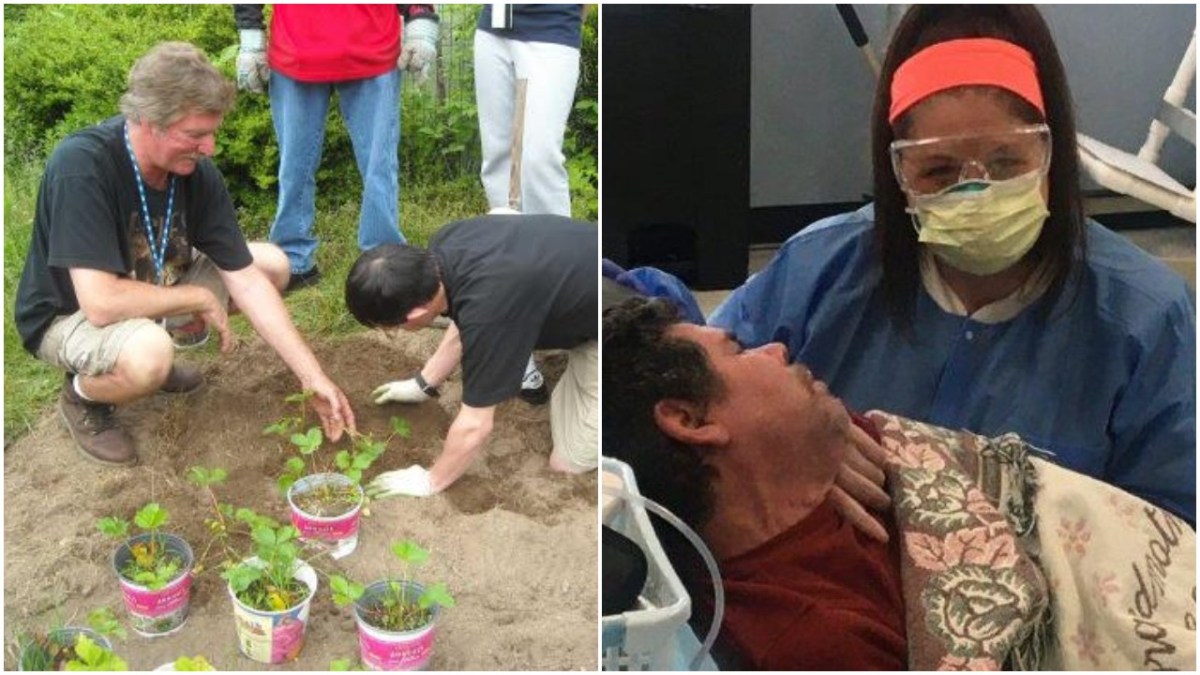By Jennifer Corr
Group homes run by disability care agencies across Long Island are tasked with providing a good quality of life for people who need support in their daily lives.
But impeding that mission to provide a good quality of life, full of activities and socialization, is a lack of funding from the state. Charles Evdos, the executive director of the agency Rise Life Services, based in Riverhead, said that budget cuts — 16.2 percent in 2020 and 23 percent in 2021, followed by a decade of lack of Cost of Living Adjustments (COLA) — make it difficult to maintain and incentivize staff.
“The current staffing crisis has also resulted in East End Disability Associates operating its programs at minimum capacity, deploying senior staff to cover direct support professional shifts, postponing planned development, and discontinuing some programs that we have provided to families since 1993,” said Lisa Meyer Fertal, the chief executive officer of East End Disability Associates, in a letter sent to family, friends, and business associates. East End Disability Associates operates seven group homes on the East End of Long Island.
And it does not help that budget cuts, along with the lack of COLA, are not taken into consideration by the state as it continues to implement mandates such as requirements for filling positions or having a certain amount of staff to watch the group homes.
“The problem you have now, with all these mandates and cuts, 80 percent of our budget is salaries,” Evdos said. “The problem is, we want to raise the direct care workers to $20 an hour. The state doesn’t give us the money to do that. Basically, agencies on Long Island are paying anywhere from $14.50 to maybe $16.00. Agencies can’t afford to pay the $20 an hour.”
What happens, Evdos added, is that staff members realize they can work a job at Lowe’s Home Improvement or McDonald’s for an easier job that will get them more money. In fact, according to a study from New York Disability Advocates, 39.2 percent of agencies reported that they were unable to open programs due to staffing shortages. Agencies also reported a 93.16 decrease in job applications.
Fertal stated in the above letter that East End Disability Services had two group homes in the developmental phase that were ready to provide a lifetime home for 12 individuals living with their families. But while the homes were ready for occupancy, the agency could not operate the homes due to an insufficient amount of staff.
This shortage could be exacerbated if the state mandates that workers within this industry must be vaccinated. Currently there is no requirement, but 10 employees told Evdos that if they were required to be vaccinated to continue their employment at the agency, they would resign.
“Our staff are working 24/7 and they’re burning out,” Evdos said. “That’s a problem.”
Agencies such as Rise Life could also lose money whenever an individual spends the night away from the group home at say, their parents’ house, or if the individual has to go to the hospital.
“What happens sometimes is, some of our individuals need hospitalization and care, and even though we have the staff, and the expense there, they take the money away from us,” Evdos said. “When you look at our budget, 80 percent of our budget goes to salaries. So there’s not much room for cost savings. You have to pay rent, you have to pay insurance, you have to pay whatever. It’s a problem.”
There is no room for cuts when direct care workers are dealing with people’s lives, Evdos said. These employees are required to meet certain criteria and to be trained to work with individuals with developmental and intellectual disabilities. But their pay does not reflect the work they do.
“The state needs to come to the plate,” Evdos said.
State Sen. John Mannion, the chair of the Senate Standing Committee on Disabilities, did lead a public hearing on Sept. 14 in Albany to evaluate the current workforce challenges within the system that supports New Yorkers who have intellectual and developmental disabilities.
“This hearing is significant action,” Mannion said during the hearing introduction. “It is a manifestation of a very real crisis that is taking place in communities in New York. There are simply not enough caring and compassionate New Yorkers who are pursuing employment working with the disabled.”
Low pay is clearly one of the factors behind this workforce shortage, Mannion said. But low pay is not the only reason, as the state needs to fund the recruitment of more clinical staff, such as nurses and mental health professionals.
“We need to work with community colleges,” Mannion said. “We need to fund tuition credits and mentorships. We need to have a strategy that brings together job seekers with these challenging but rewarding and fulfilling positions.”
Currently, predominantly women of color, make up most of the workforce in disability care across the state, Mannion said. At Rise Life, Evdos said, more than half of the employees are Black or Hispanic.
“They talk about fair wages and helping the minorities, and they’re not helping the minorities,” Evdos said. “Living on Long Island is very expensive. A lot of our employees work three or four jobs just to make ends meet.”
To address the crisis, Mannion said, the committee has rejected the cuts proposed in the budget and also secured the first COLA in over a decade.
“This is long overdue,” Mannion said. “No employee anywhere should go without a raise and people who provide this service certainly deserve one. Our front-line healthcare heroes, particularly those who we entrust with our vulnerable, deserve to be valued. They deserve better pay.”
But these victories are not enough, Mannion added, as they must serve as a launch pad for additional increase in salary for direct support professionals.
The state did just receive $700 million from the federal government, with $550 million of those monies allocated towards this workforce shortage. “It will provide for things like longevity bonuses and hazard pay,” Mannion said.
During the hearing, he called on the state to match the federal investment and include $500 million in the next budget to “begin moving the needle on this crisis.”
Sign up for Long Island Press’ email newsletters here. Sign up for home delivery of Long Island Press here. Sign up for discounts by becoming a Long Island Press community partner here.

































